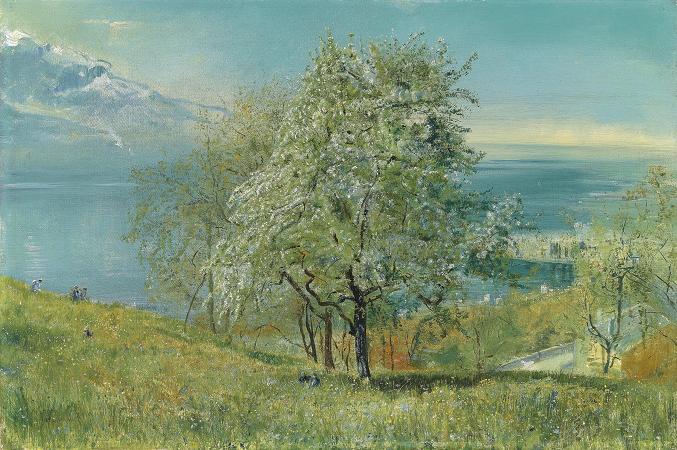
Lake Geneva. Lake Geneva is a lake on the north side of the Alps, shared between Switzerland and France.
It is one of the largest lakes in Western Europe and the largest on the course of the Rhône. Of it 59.53% comes under the jurisdiction of Switzerland, and 40.47% under France.
The first recorded name of the lake is Lacus Lemannus, dating from Roman times; Lemannus comes from Ancient Greek Liménos Límne meaning port's lake; it became Lacus Lausonius, although this name was also used for a town or district on the lake, Lacus Losanetes, and then the Lac de Lausanne in the Middle Ages. Following the rise of Geneva it became Lac de Genève.
In the 18th century, Lac Léman was revived in French and is the customary name in that language. In contemporary English, the name Lake Geneva is predominant.
Lake Geneva is divided into three parts because of its different types of formation: Haut Lac, the eastern part from the Rhône estuary to the line of Meillerie-Rivaz. Grand Lac, the largest and deepest basin with the lake's largest width. Petit Lac, the most south-west, narrower and less deep part from Yvoire-Promenthoux next Prangins to the exit in Geneva. According to the Swiss Federal Office of Topography, swisstopo, Lac de Genève designates that part of the Petit Lac, which lies within the cantonal borders of Geneva, so about from Versoix-Hermance to the Rhône outflow in Geneva. The Chablais Alps
It is one of the largest lakes in Western Europe and the largest on the course of the Rhône. Of it 59.53% comes under the jurisdiction of Switzerland, and 40.47% under France.
The first recorded name of the lake is Lacus Lemannus, dating from Roman times; Lemannus comes from Ancient Greek Liménos Límne meaning port's lake; it became Lacus Lausonius, although this name was also used for a town or district on the lake, Lacus Losanetes, and then the Lac de Lausanne in the Middle Ages. Following the rise of Geneva it became Lac de Genève.
In the 18th century, Lac Léman was revived in French and is the customary name in that language. In contemporary English, the name Lake Geneva is predominant.
Lake Geneva is divided into three parts because of its different types of formation: Haut Lac, the eastern part from the Rhône estuary to the line of Meillerie-Rivaz. Grand Lac, the largest and deepest basin with the lake's largest width. Petit Lac, the most south-west, narrower and less deep part from Yvoire-Promenthoux next Prangins to the exit in Geneva. According to the Swiss Federal Office of Topography, swisstopo, Lac de Genève designates that part of the Petit Lac, which lies within the cantonal borders of Geneva, so about from Versoix-Hermance to the Rhône outflow in Geneva. The Chablais Alps
Wikipedia ...